Representatives of the fair sex value not only practicality in clothing, but also beauty. The use of lace fabric is one of the ways to create elegant and attractive things, from magnificent dresses to chic underwear. At the same time, lace fabric amazes not only with its beauty, but also with various manufacturing techniques, which can be either manual or machine-made.
Properties of lace and how this fabric is made
Lace weaving is a rather ancient type of decorative and applied art that originated in Italy. The openwork fabric quickly gained popularity among the ladies of the court, and after a while this art spread throughout Europe. Today, this skill has not been forgotten, although it is not such a mass hobby. Modern girls prefer to buy already sewn outfits with openwork elements or completely made of lace fabric.
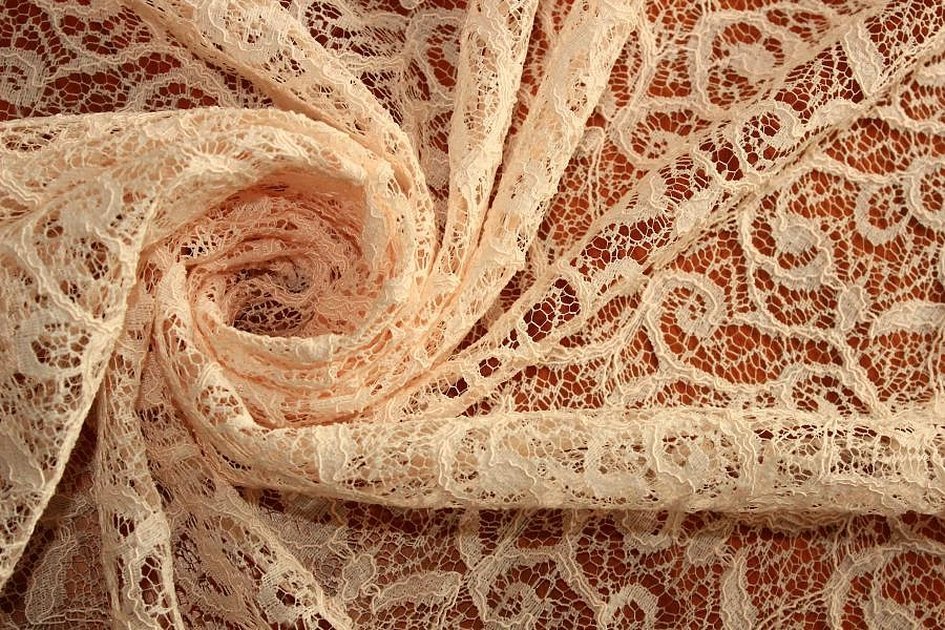
If we analyze it in more detail, lace is a textile without a woven base, where the pattern is formed by interlacing threads. This method of production makes this material more airy, elastic with a mesh structure.
Attention! Lace fabric can be made from both natural (cotton, linen, silk) and synthetic threads.
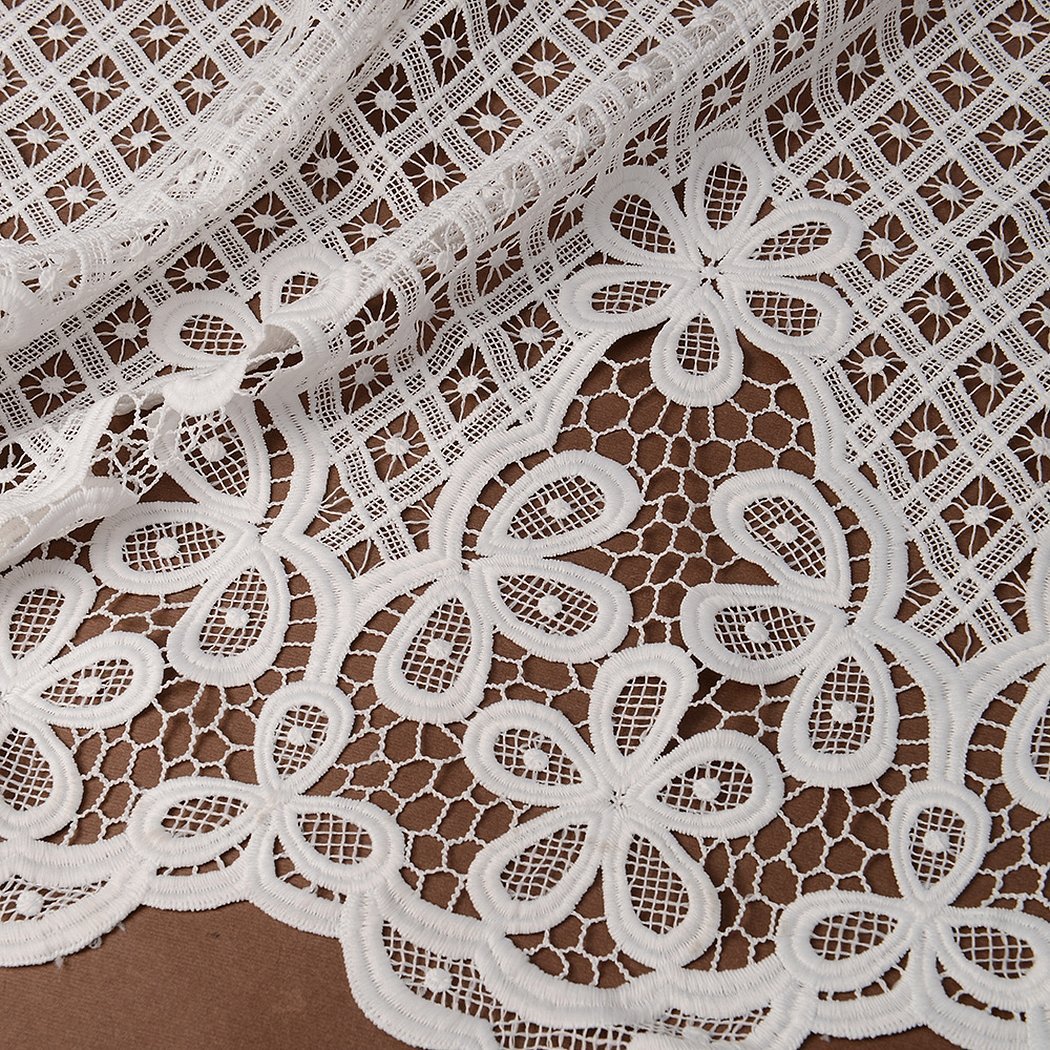
The main properties of lace fabric include the following:
- thinness, which makes lace fabric an excellent material for making delicate dresses, and due to its thinness, it goes well with other fabrics;
- the complexity of the design, which makes this material stand out from others and also allows it to be used for decorative purposes;
- transparency, as the fabric has a mesh base;
- lightness, which makes it possible to combine lace with denser, heavier fabrics.
It is also worth noting that lace fabric does not crumble along the cut, allowing you not to process the edges with an overlock stitch. At the same time, patterns can be made without determining the grain line.
Depending on the manufacturing method, patterned fabrics are divided into 2 types:
- self made;
- machine production.
Hand lace can be made by weaving on special sticks (bobbins), embroidered with a thin needle or made using the Hardanger technique. Machine lace includes openwork and guipure.
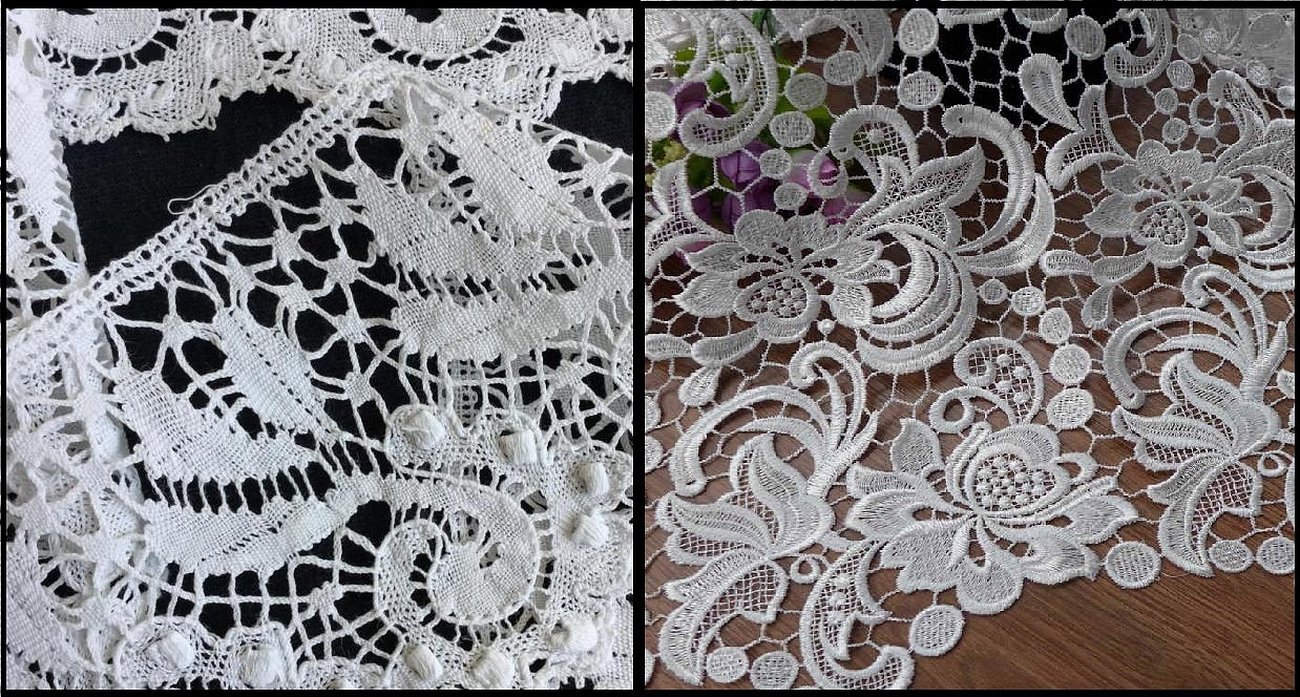
Unique lace weaving techniques
Lace fabric can be made in various ways, unique weaving techniques include the following:
- Tambour is a method of hand knitting using a hook. This method allows you to create the smallest elements using one thread.
- Macrame, also called knotwork.
- Hardanger involves embroidering a pattern with satin stitch and then cutting out the fabric inside the pattern.
- Richelieu, where the base is a thin fabric (organza, mesh, cambric). The pattern is embroidered with stitches of different lengths.
- Needle lace, where a pattern from a diagram on paper is transferred to fabric with a thin needle.
- Fillet weaving, where the weaving is done on a mesh base, filling square or diamond-shaped cells.
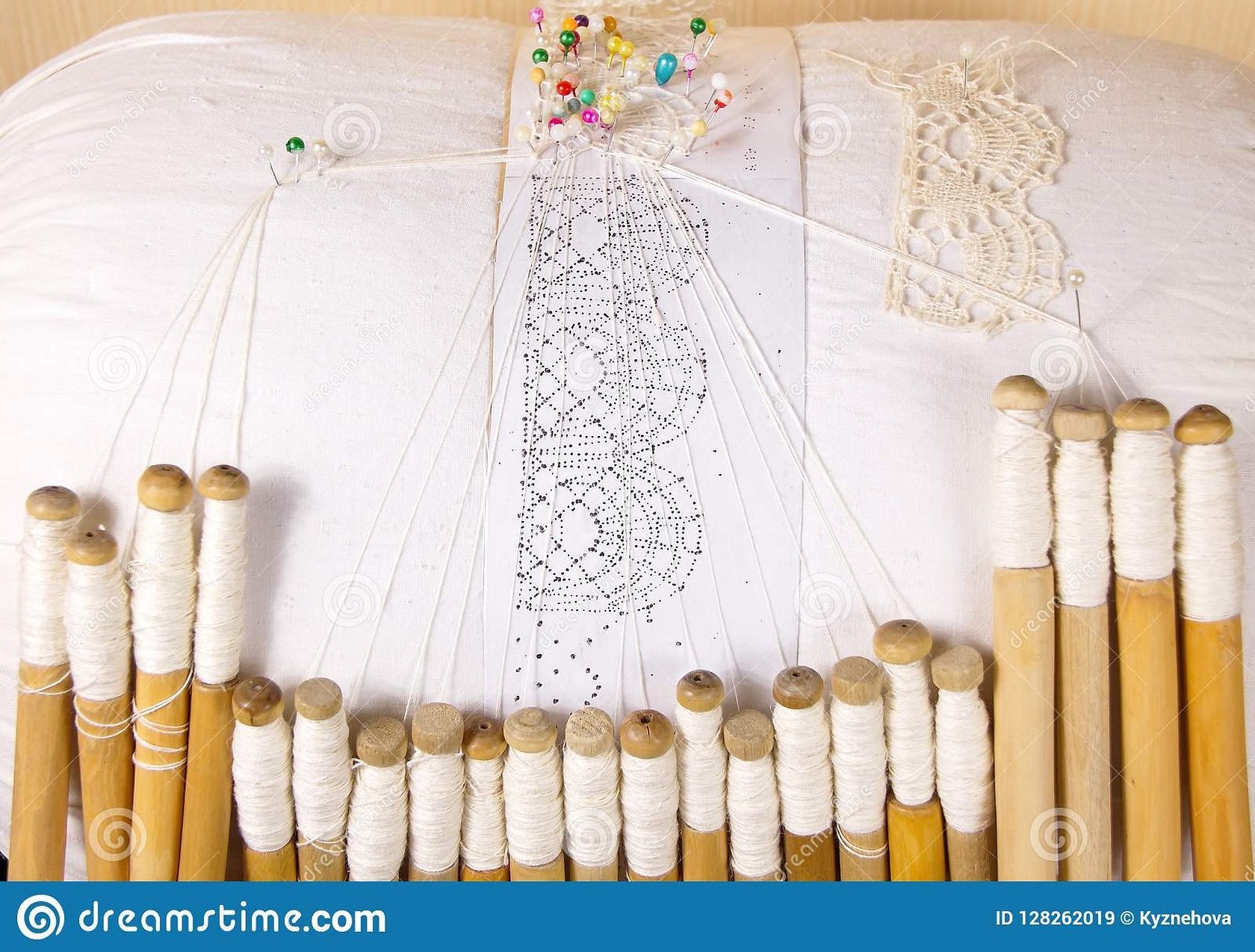
In addition to unique weaving and execution techniques, lace can also be divided into the following:
- French;
- Italian.
French lace
Despite the fact that most of the names of lace fabric are of French origin, France is not the birthplace of the patterned material. But thanks to attempts to repeat the technique of Italian lace, French craftswomen created more diverse weaving methods. And today, many fashion designers choose French lace to create their outfits.
The very first French lace was Alencon. Its basis was tulle with hexagonal cells, the pattern along the contour was embroidered with white horsehair and had the appearance of plant ornaments, bouquets.
Please note! Today, handmade Alencon lace is included in the UNESCO World Heritage List. It is now almost impossible to find hand embroidery on sale, since such material is produced by machine. At the same time, Alencon lace made by machine knitting is relatively inexpensive. And often this lace fabric is used to decorate wedding dresses.
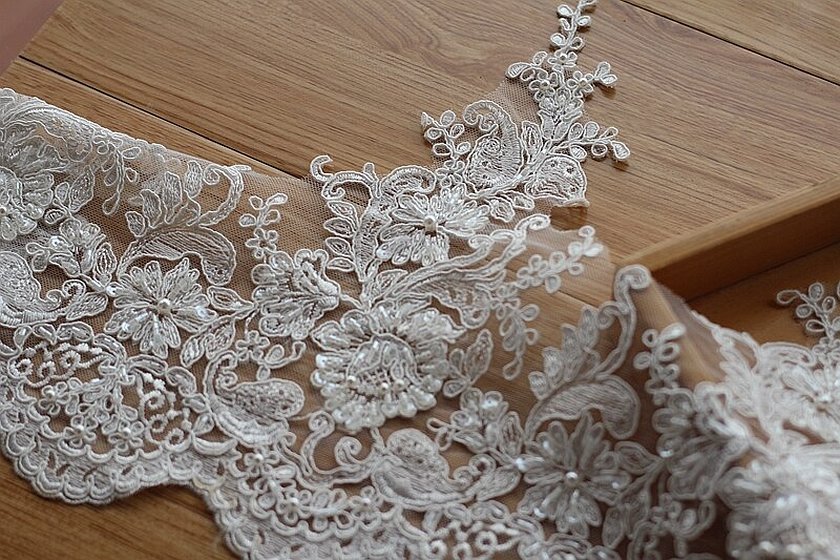
Another type of French lace popular today can be considered Chantilly, woven from black silk thread. Its features are not only the use of black thread, but also a special mesh base, which has honeycomb-shaped cells, as well as a method of making a pattern, where the frequency of weaving the thread is changed as needed to create a more voluminous ornament. The edges of the pattern are trimmed with a dense thread, which makes the picture more expressive.
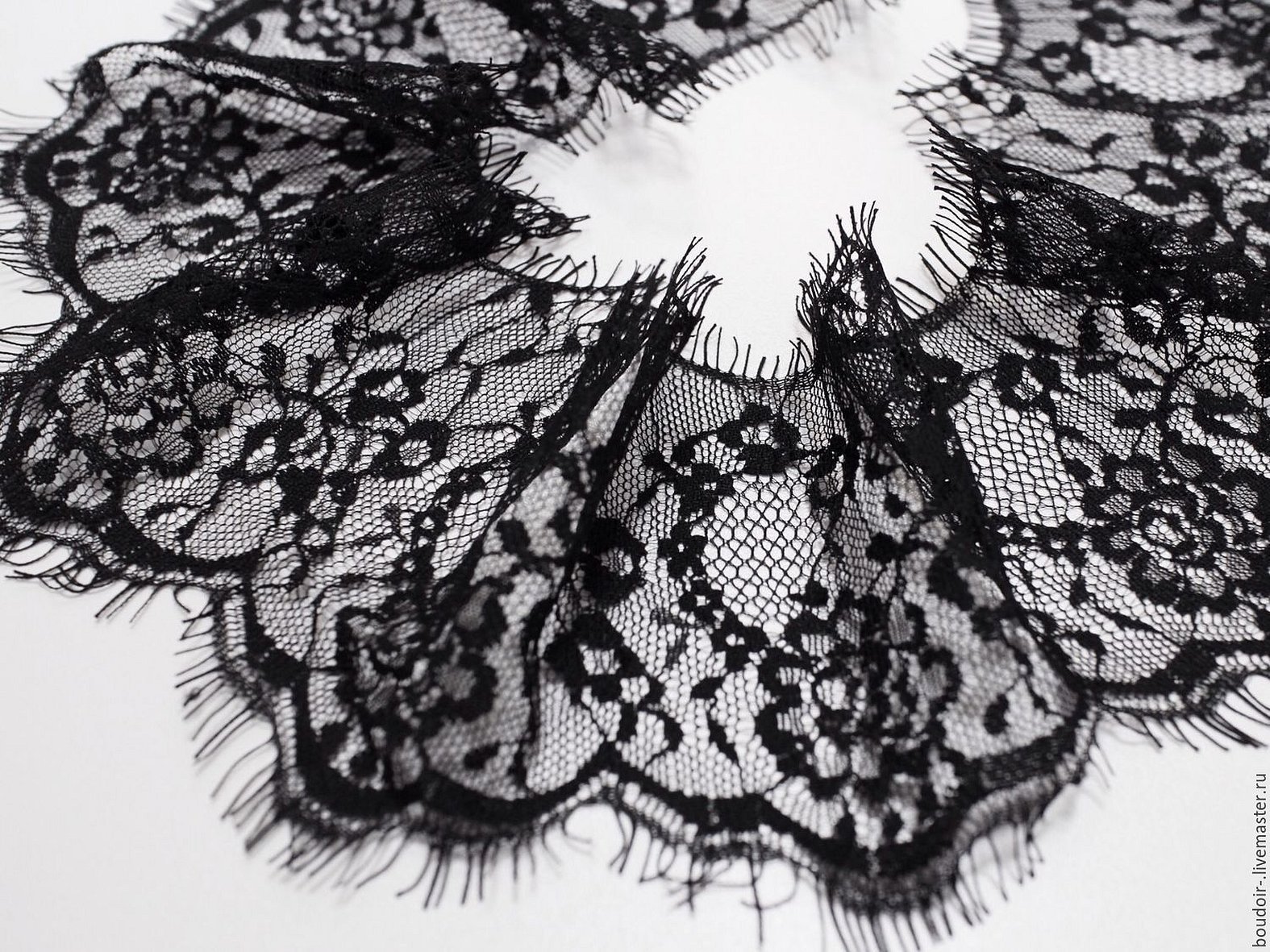
Italian embroidered lace
Italy, being the birthplace of lace, first introduced the world to the original fabric with an embroidered pattern of a seam along a slit and with a reticella ornament (woven and sewn with a needle). The very first Italian lace was a narrow strip of fabric with a simple geometric ornament. Initially, a fragment was cut out of the fabric and filled with lace, usually using a loop stitch.
Over time, reticella lace began to be made not on a woven base, but also on threads. The patterns typical for this technique were circles, triangles, squares. Later, reticella was transformed into a pattern that became known as Punto in Aria ("stitches in the air").
Venice was especially famous for its lace production. Venetian guipure has been periodically modified since its inception. Initially, it was a complex pattern in the form of plant shoots, from which buds of various flowers extended, connected to each other by thin ligaments with thorns.
Over time, the ornament of Venetian guipure became smaller, the relief of the contour was made less noticeable and almost non-convex. Today, we can distinguish relief and classic guipure, and usually use such lace fabric for sewing elegant dresses.
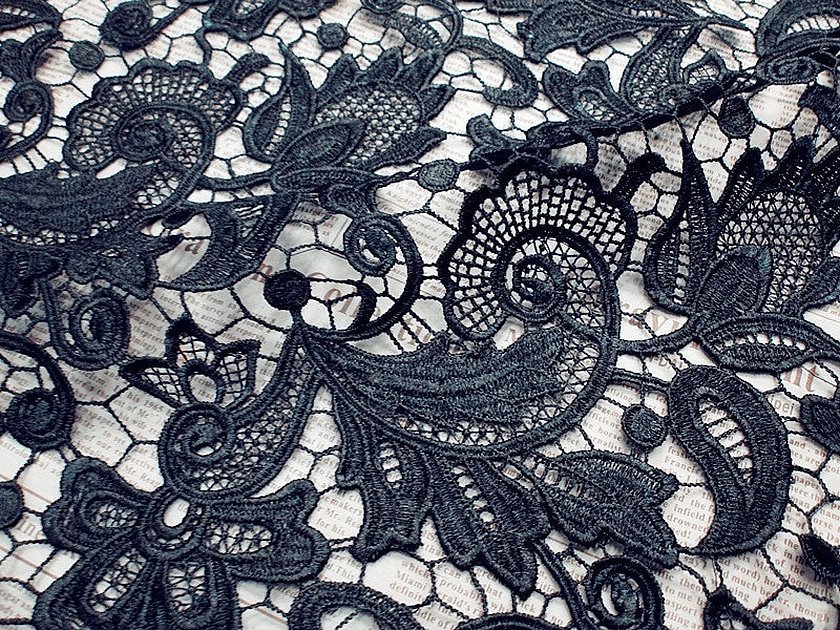
Guipure - advantages and disadvantages
Guipure, like all types of openwork fabric, has many advantages:
- a beautiful pattern that can decorate any outfit;
- lace guipure fabric for dresses is presented in a huge variety from various patterns to shades;
- this material is lightweight and breathable;
- Its versatility allows it to be used for both expensive wedding dresses and cheaper outfits.
Naturally, this material is not without its drawbacks:
- transparency of the fabric, which requires additional lining;
- when sewing and cutting, it is necessary to select a pattern so that the product looks aesthetically pleasing;
- With thin guipure, it is easy to make snags or break threads.
Advantages and disadvantages of handmade lace
Hand-made lace fabric, regardless of the technique of its production, still has a number of its advantages and disadvantages, which must be taken into account.

The advantages of handmade lace include the following:
- use of only environmentally friendly and natural materials;
- hygienic and highly breathable;
- safety, since natural fabrics do not cause allergic reactions or irritation;
- This type of lace does not accumulate static electricity.
Attention! There are only two disadvantages: high cost and high maintenance requirements.
What is lace fabric used for?
Lace fabric has many applications. Basically, openwork fabric is used for sewing women's and children's clothing, wedding and evening dresses, casual and elegant blouses, tunics, tops, underwear, stockings, stoles, scarves and gloves are created from it.
Openwork fabric is also used to make decorative elements of clothing such as collars, cuffs, and braid.
The use of patterned material for home interiors is no less common. You can find various openwork tablecloths, curtains, napkins, towels and bed linen.

How to properly care for lace products
Like all delicate fabrics, lace requires certain care rules to be followed, which will help preserve the original appearance of the product, as well as the structure of the openwork material.
Care instructions:
- Use hand washing only. Only thick lace can be washed in the washing machine if necessary.
- Use warm water heated to 40 degrees.
- The detergent used for washing should be specially designed for delicate fabrics.
- In case of heavy contamination, it is better to use laundry soap.
- After washing, it is advisable not to wring out the product, but to leave it hanging to drain the water.
- After drying, iron only through gauze.
Attention! It is not recommended to iron relief guipure with a three-dimensional pattern, as well as if it contains synthetic fibers.
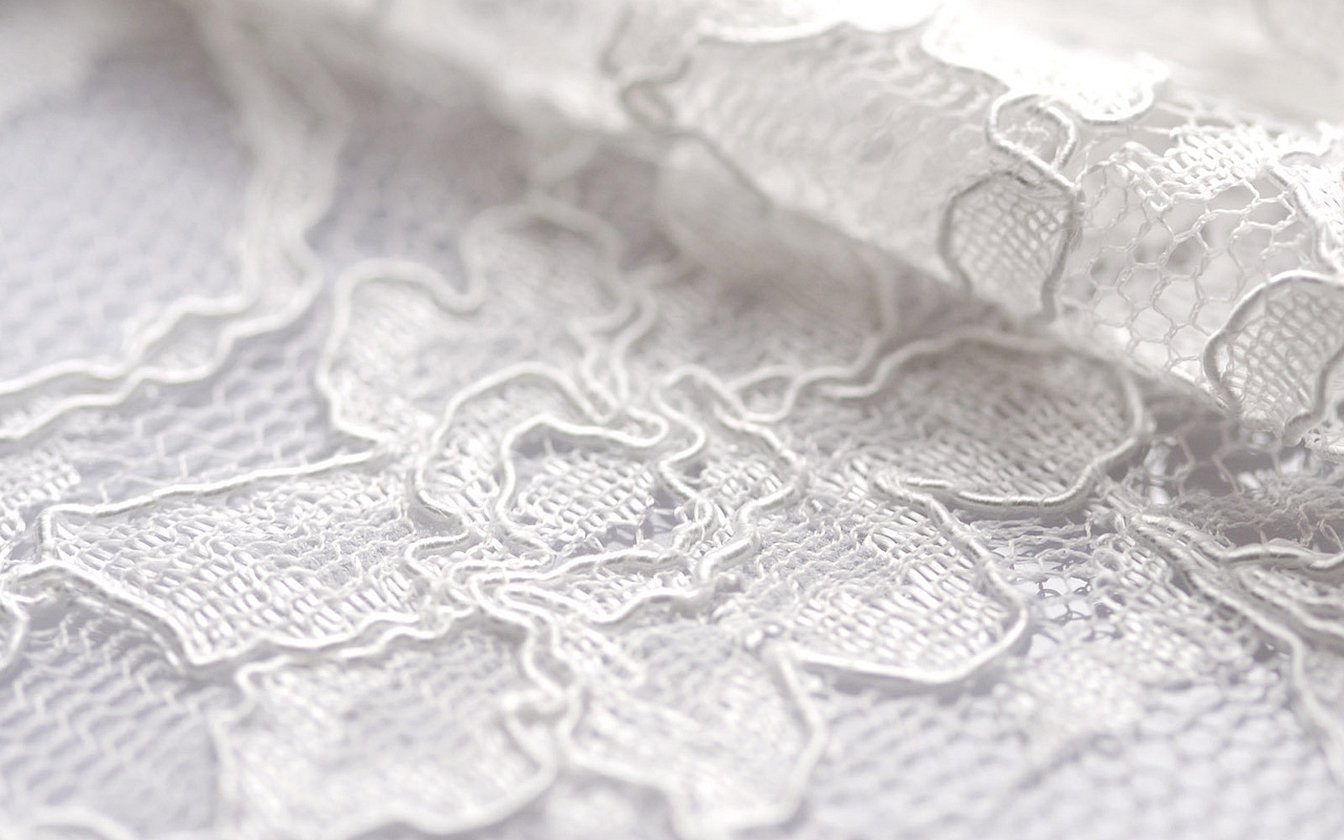
Although modern lace fabric is mostly machine-made and with the addition of synthetic fibers, it is in no way inferior in beauty to hand-made. The material also looks luxurious and attractive, and is also affordable for every girl.




